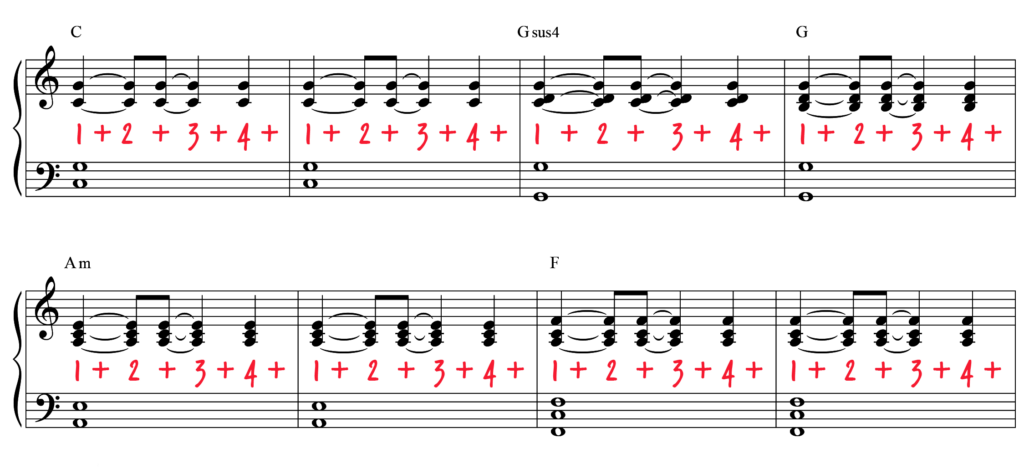As piano players, rhythm can sometimes fall by the wayside. But a good sense of rhythm makes the difference between good and pro-level playing. Having good rhythm is what makes a performance sound “tight”—that confident feeling when the musicians clearly know what they’re doing! So, here’s how to level up your playing using piano rhythm exercises. We’ll introduce several to you in this lesson, from beginner-friendly scale exercises to expert-level polyrhythms.
Table of Contents:
Get exclusive interviews, fascinating articles, and inspiring lessons delivered straight to your inbox. Unsubscribe at any time
By signing up you’ll also receive our ongoing free lessons and special offers. Don’t worry, we value your privacy and you can unsubscribe at any time.
The go-to way to practice rhythm is by using scales. Start with a simple, one-octave scale that you know well and don’t have to hunt the notes for, such as C major. Then, turn on your metronome and play the scale with a variety of note values.
Play your scale in quarter notes. Make sure to line your playing up with the metronome exactly.

Now play your scale in eighth notes. This means it’ll be twice as fast as the quarter note version.

Now we’ll fit three notes (a triplet) into one quarter-note beat! This one is much faster, so you may want to practice one hand at a time first.

Our fastest scale exercise, this one will be twice as fast as the eighth note exercise. That means you’ll fit in four notes in the space of one quarter-note beat.

When it comes to playing the faster subdivisions, emphasizing the downbeat can help keep things organized.
Try challenging yourself by playing all these rhythms in one go. Then, try playing other scales and at a faster tempo!
Practicing scales is helpful, but it’s even more helpful (and likely more fun!) to practice rhythm patterns that you’ll encounter in songs. Here are popular rhythm patterns that every pianist should know.
As seen in: “All of Me” by John Legend
This is a very common pop song pattern that you can apply to any chord progression. The tricky part here is playing on the “and” of the second beat. Start slow and count out loud—it helps!

As seen in: “The Scientist” by Coldplay
This is another pattern you can use to practice those offbeats! Our right hand will be playing straight quarter notes, but our left hand will play between.

Our final and most challenging pattern involves polyrhythms: that means your hands will be playing different meters in each hand!
In this polyrhythm, you’ll play three times with your right hand in the space of twice in your left. You can count 1-2-3 and sync that with your right hand or count 1-2 and sync that with your left—whichever feels more intuitive to you. It may also help to draw lines on the sheet music so you can see where the notes line up.
Sped up, this rhythm sounds really good in 12/8 with a drum track.

We hope you have fun practicing these rhythms! If you need more help, Pianote has a handy practice-along feature to help you master rhythm fast. Check it out with a free trial.
Get real feedback from real experts…all from the comfort of your own home. Explore our Method and community for yourself with a free trial.
Kevin Castro is a graduate of the prestigious MacEwan University with a degree in Jazz and Contemporary Popular Music, and is the Musical Director and touring pianist for JUNO-winning Canadian pop star, JESSIA. As your instructor at Pianote, Kevin is able to break down seemingly complex and intimidating musical concepts into understandable and approachable skills that you can not only learn, but start applying in your own playing. Learn more about Kevin here.


By signing up you’ll also receive our ongoing free lessons and special offers. Don’t worry, we value your privacy and you can unsubscribe at any time.
We use cookies for traffic data and advertising. Cookie Policy »